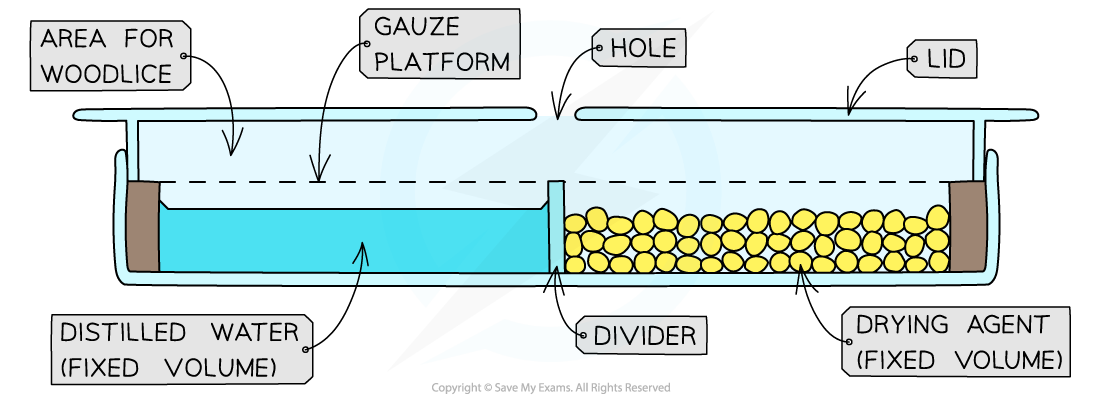- 翰林提供学术活动、国际课程、科研项目一站式留学背景提升服务!
- 400 888 0080
AQA A Level Biology复习笔记6.1.6 Causes of Animal Movement
Investigating Environmental Factors That Cause Animal Movement
- Environmental factors can be abiotic or biotic
- Abiotic factors are the non-living parts of an environment
- For example: temperature, wind, humidity and soil pH
- Biotic factors are the living parts of an environment
- For example: competition, predation and disease
- Experiments can be carried out to investigate the effect of abiotic factors on the movement of animals
- Choice chambers and mazes are often used in these experiments and woodlice and maggots are commonly the model animals
- A scientist called J. Cloudsley-Thompson carried out the first experiments on woodlouse behaviour
- One of his experiments focused on the response of woodlouse to humidity
- He used large choice chambers that were divided into two sections
Apparatus
- Choice chambers
- Lids
- Distilled water (fixed volume in each choice chamber)
- Drying agent (fixed volume in each choice chamber)
- Gauze platforms
- Woodlice
- A dark cupboard
- A bright well-lit room
Method
- Divide each choice chamber into two sections
- Add a fixed volume of distilled water to one side and a fixed volume of drying agent to the other
- This allows for the humidity to be controlled in each section
- Insert gauze platforms into the choice chambers
- This keeps the woodlice at a safe distance from the water and drying agent
- Note that woodlice are able to move between sections
- Divide the woodlice into two even-sized groups
- Drop the woodlice from group A into choice chambers kept in the dark
- Drop the woodlice from group B into choice chambers kept in the light
- The woodlice can be dropped into the chamber using the hole in the lid so that they fall into the centre of the choice chamber
- Record the position of the woodlice in each choice chamber after 15 minutes
- They should fall into the following categories: moving around, stationary on the dry side, stationary in the centre or stationary on the humid side
- Repeat the experiment several times for all conditions
Results and analysis
- A significant percentage of the woodlice (in all groups) moved to the humid side
- This is a beneficial response as it helps to prevent water loss from the respiratory surfaces of the woodlice
- The woodlice responded to humidity more actively when in the light
- This is advantageous - if the woodlice are subject to dry conditions during the day when they are more likely to dehydrate then they are even more likely to move towards humid conditions (under a stone, log etc)
- The woodlice tended to stop moving when in humid conditions
- This means they are able to remain within favourable conditions that reduce water loss
Limitations
- In this experiment, the conditions that the woodlice were kept in prior to the experiment have not been stated
- If the woodlice were kept in dark or light conditions it could affect their response during the experiment
- The behaviour of the woodlice was not observed during the experiment
- It can not be said if their behaviour was taxis (directional response) or kinesis (non-directional response) that randomly caused them to end up in the humid section

The choice chamber has two sections, one with low humidity and one with higher humidity
转载自savemyexams

早鸟钜惠!翰林2025暑期班课上线

最新发布
© 2025. All Rights Reserved. 沪ICP备2023009024号-1








